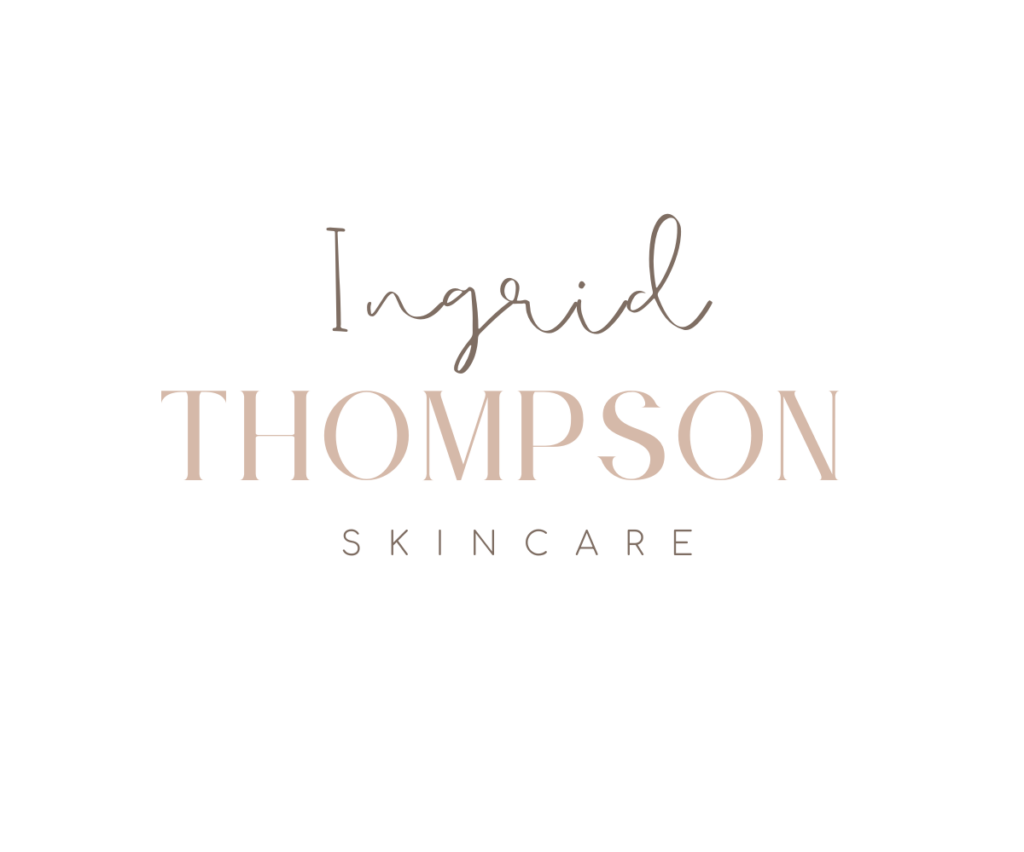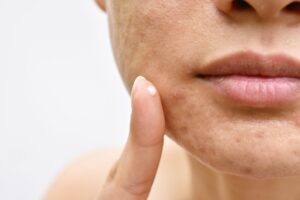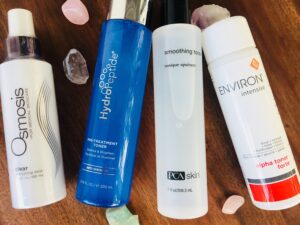Did you know that lipid barrier function is perhaps one of the most important aspects of skin health and aging?
As our skin’s first line of defense against the outside world, the lipid barrier is the outer layer of skin and is also known as the Stratum Corneum (CF). It is a protective, waterproof shield made of dead, protein-rich skin cells that contain Natural Moisturizing Factors (NMF) that help bind water to the cells. Surrounding these cells are lipids such as ceramides, cholesterol, and fatty acids. Together, this protective matrix of protein, water, and oil functions to prevent water from evaporating from the skin and external threats from entering our skin. If our barrier is not working properly, this is known as an impaired lipid barrier. This is caused by multiple factors but is most commonly caused by overwashing and exfoliating, harsh ingredients, excessively hot showers, and neglect. When our lipid barrier is impaired, we are vulnerable to environmental pollutants, pathogens, chemicals, and other sources of damaging particles.
Our skin needs will always be changing, but if we can connect our skin symptoms to imbalances in our body, we are better equipped to take proactive measures and prevent damage. A healthy lipid is our key defense against the aging process and can help us maintain a youthful glow for years to come.
Visually, a healthy lipid barrier is dewy, plump, and hydrated. When compromised, the skin may become “paper thin”, incessantly dry and flaky as moisture seeps out rapidly. This process is called TEWL (trans epidermal water loss) and, to some degree, happens naturally but is regulated properly by a healthy barrier function. So even if you’re drinking plenty of water, skin with an impaired lipid barrier will struggle with persistent dehydration. Other symptoms can include red, overly sensitive, rashy, clogged, and dull skin.
Most skin issues have internal and external components. Internal culprits range from digestive issues to nutrient deficiencies, detoxification and circulation issues, and pathogenic infections. Externally, an impaired lipid barrier is possibly the most common factor contributing to other skin issues, being that it is the skin’s defense shield.
If you think you may have an impaired lipid barrier, repairing it is not as daunting as you may think. You need an intentional plan of attack that supports your skin as it regenerates, using a less-is-more approach.
So now, what to do if your lipid barrier is impaired? Here is your plan of attack >>——>
CLEANSING
Gently cleansing, replenishing the oil balance, and safeguarding the microbiome in your skin starts with a cleansing routine that deeply cleans while keeping your outer surface oils and microbiome intact.
- Incorporating an oil cleanser is essential to restoring your skin’s lipid balance. Oils work by dissolving deep pore congestion while soothing and replenishing the skin with lipids, nutrients, vitamins and minerals.
- Cleansing your skin ONLY once a day (at night). If your skin is super dehydrated, splashing water or using a micellar water in the morning and a gentle cleanser at night is the best way to clean, while allowing the oils in your skin to re-normalize. Overwashing, disinfecting, and scrubbing your face with harsh products will kill the bad bacteria but, much like oral antibiotics, will also wipe out beneficial bacterial strands.
- Avoiding harsh surfactants such as Sodium Laurate, Sodium Cocoate, Sodium Tallowate, Sodium Lauryl Sulfate (aka SLS) is essential to rebuilding your lipid barrier. Although these mainstream ingredients help readily dissolve makeup and grime, they also remove precious lipids, denature healthy proteins, and dissolve NMF in the skin, preventing your lipid barrier from holding onto water properly. Instead, choose milder surfactants such as Sodium Laureth Sulfate (SLES), Cocoamidopropyl Betaine (CAPB), Sodium Cocoyl Isethionate, Alkyl Sulfosuccinates, and Alkyl Sarcosinates. Due to the larger molecular size and natural origins, formulations containing a blend of mild surfactants are found to be kinder to the skin. Contrary to popular belief, foaming isn’t necessarily a telltale sign of a cleanser’s harshness. It’s all about the types of surfactants used.
EXFOLIATION
Preventing dull, lifeless cell buildup is an essential step to glowing skin. However, repetitively stripping our skin’s natural oils away by using harsh physical exfoliants or harsh chemicals is harmful to our skin, causing a compromised barrier and the cascade of problems that follow it. When it comes to exfoliation, keep the following 3 rules in mind.
- Ditch the scrubs. PERIOD. Most scrubs can cause micro-tears in the skin, dry and irritate your lipid barrier. Especially when you are trying to repair your lipid barrier, its essential to not use harsh physical exfoliants.
- For those with thick and sturdy skin, cleansing brushes can be used once a week. Use a gentle brush head and sanitize after each use.
- Using light peels such as Glycolic, Lactic, TCA, and Fruit Enzymes either via periodic professional treatments, serums, or masks helps gently dissolve the glue that holds dead skin cells together with the added benefit of killing bacteria, speeding up cell renewal, boosting circulation and detoxification.
NOURISH AND REPAIR
The final step to repairing your lipid barrier is to apply the necessary nutrients to repair skin cells and regulate oil production. The following ingredient categories will help repair and replenish cells and restore it’s ability to retain moisture.
- Retinal Palmitate or Retinaldehyde, Regenerative Peptides, and Niacinamide are essential for cellular repair, oil balance, and replenishment.
- Facial oils contain emollient lipids and antioxidants that nourish, soften, and soothe the skin. They also fill in spaces between skin flakes and replenish cell membranes.
- Humectants attract and bind water to improve hydration levels and plump the skin. Ingredients such as propylene glycol, hyaluronic acid, glycerin, and allantoin.
- Once you replenish the water content of your skin cells and oil content of your cell membranes, you must seal in the moisture to prevent TEWL. This is when water evaporates from your skin due to a lack of barrier. Ingredients such as ceramides, lanolin, shea butter, squalane, and castor oil help bolster a protective barrier, locking in moisture. Applying an occlusive product right after showering can trap water in the skin.
If you’ve been experiencing chronic dryness, why not give it a shot? You may find your skin turns around in no time.





